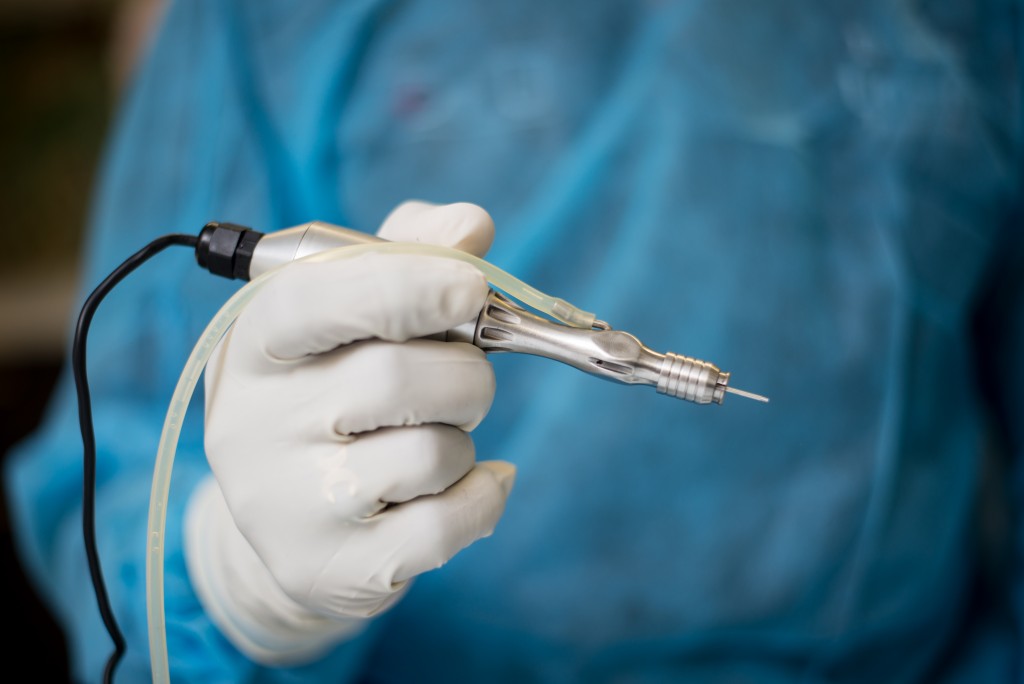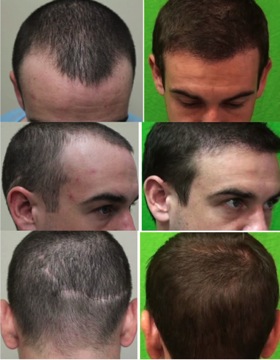First a sharp instrument is used to make the initial cut. Some follicles are strongly attached to the surrounding tissue. Deeper cuts are often needed to separate them. Once this separation is achieved, the surgeon then removes the hair follicle.
How An F.U.E. Hair Restoration Procedure Is Performed, TOOLS
There are different tools that can be used for harvesting the hair follicle grafts. They range from simple manual tools to more complex and technological ones. Ironically, there is more risk of unwanted consequences with the more advanced innovations which cannot replace the discerning human touch of a highly skilled surgeon.
There are four basic types of tools that can be used to perform an F.U.E. hair restoration procedure:
- A manual punch which is used to cut around the hair follicles using a quick rotation performed by hand. The physician may need to gently pull the follicle or continue to dissect in order to fully separate the follicle and extract it. This is the most widely used tool for F.U.E. procedures.

- An electromechanical rotary tool can help compensate for an unsteady hand and minimize the margin of error and transaction rates. The rotary motion is performed mechanically as opposed to manually. More hair restoration surgeons are switching to these tools to perform F.U.E. procedures.

How An F.U.E. Hair Restoration Procedure Is Performed A vacuum device (e.g. Neograft) combines an electromechanical approach to making incisions with a vacuum to suck out the follicle. Each hair graft is then deposited into a receiving container. Although this is a faster means of extraction, it also poses high risk of trauma to the both the donor tissue and the hair follicle. However, patients can choose to have the suction feature turned off during their surgery.
- Robotics technology (e.g. Artas) is restricted to patients with straight, black or brown hair. Although it is a machine, it is still not as fast as a manual technique executed by a highly skilled physician. Furthermore, there is also a higher chance of the grafts being buried with this approach.
Reinsertion of the Hair Follicles in F.U.E. Hair Restoration.
The surgeon uses small microblades or thin needles to create punctures in the bald areas of the scalp. These wounds are carefully positioned to replicate a natural hair pattern. The grafts are then inserted into the individual punctures. Oftentimes, this stage is performed by technicians.
Understanding some of the more technical aspects of how an F.U.E. hair restoration procedure is performed will enable you to make more informed decisions when it comes to choosing a practitioner.
Opinions on Neograft in FUE Hair Transplantation

